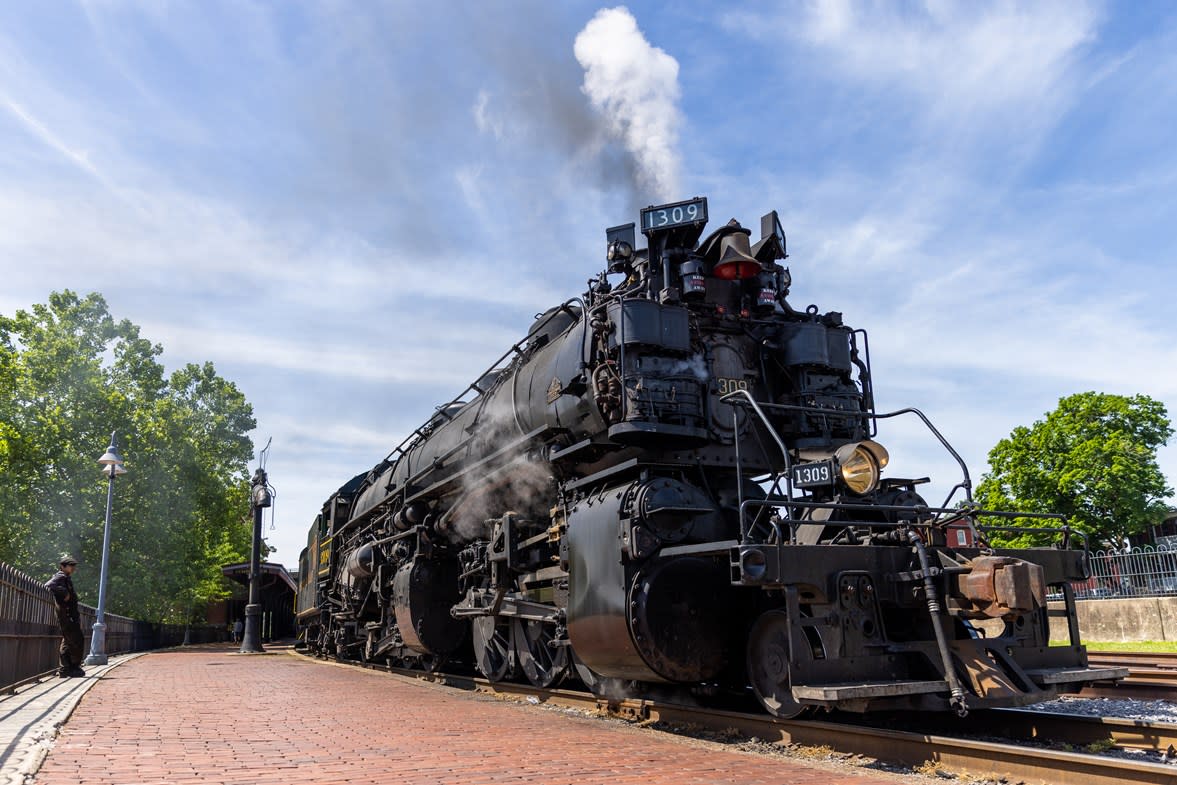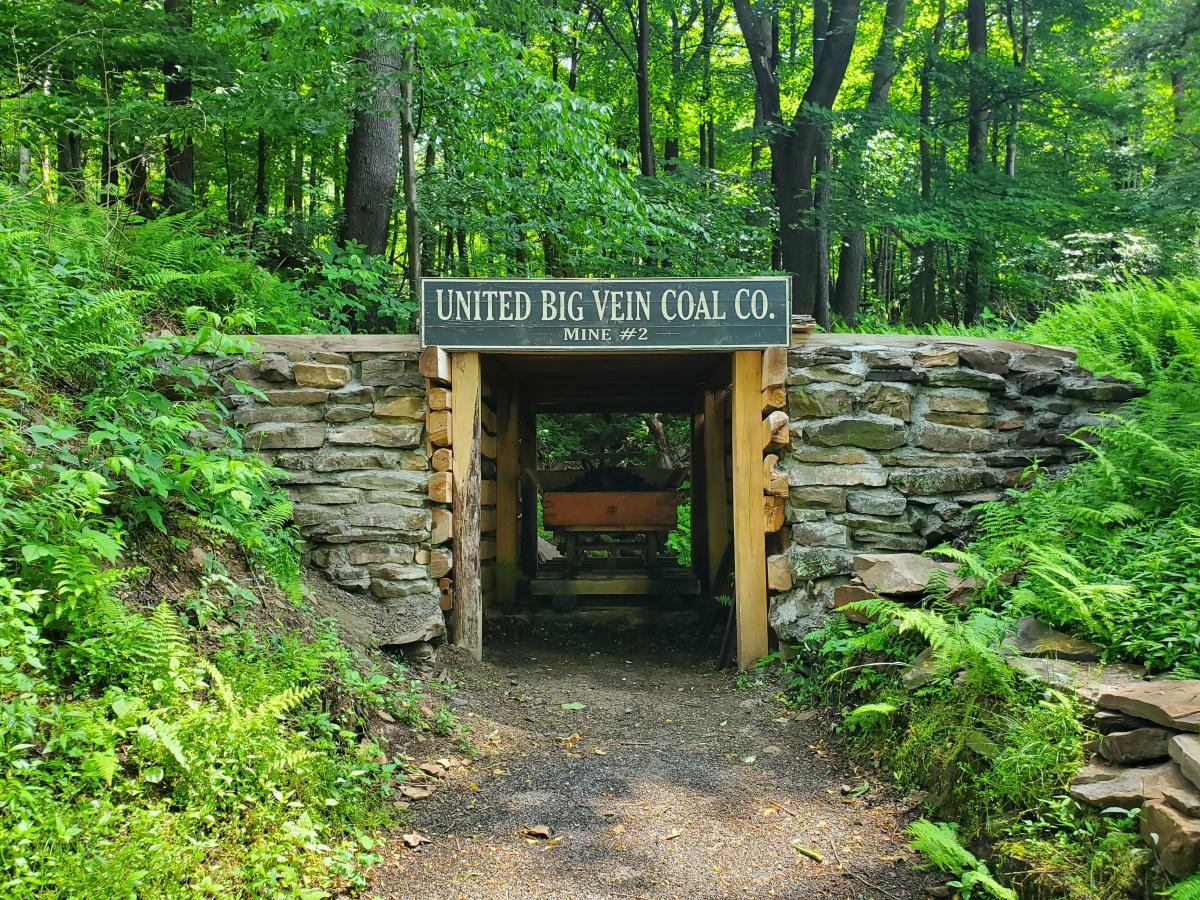Once a major center in the US coal industry, the Georges Creek Valley was historically known as "The Big Vein" for its thick seam of bituminous coal, famous for its clean-burning, low-sulfur content that made it ideal for powering ocean steamers, riverboats, locomotives, steam mills, and machine shops. Due to the discovery of the bituminous coal, Lonaconing built the Iron Furnace, which was the first in the United States to successfully use coal and coke fuel, rather than charcoal, to produce pig iron. The massive furnace produced nearly 75 tons of iron per week at its height of production and supplied dowels for the C&O Canal's lock walls. With coal as the main export, at the advent of the railroad, rail lines were built from Westernport to Frostburg and Cumberland to transport products across the country, with Allegany County lines including the George's Creek and Cumberland Railroad, Baltimore and Ohio Railroad, Cumberland and Pennsylvania Railroad, and the Chesapeake and Ohio Railroad. Explore the many stories and rich history of Allegany County's coal heritage by adding these stops to your itinerary.

Allegany Museum
Cumberland, MD
Historically, Cumberland has been known as a transportation hub, home to the first federally funded highway, the terminus of the C&O Canal, and the center for the railroad industry. The first floor of this expansive museum “The Crossroads of America” exhibition traces the history of human movement through Cumberland and Allegany County. The museum’s newest exhibition space highlights the evolution of transportation from about 1750 to 1900. Space includes scale models of canal boats and trains, a fully restored 1825 Conestoga wagon, a Paleoindian hut, a model of Fort Cumberland, models of what George Washington looked like when he visited our area in the 1750s, and in 1794, and displays about the National Road, the C&O canal, and the railroads.
 Western Maryland Scenic Railroad
Western Maryland Scenic Railroad
Cumberland, MD
Take a 90-minute excursion from Cumberland to Frostburg, through the Allegheny Mountain range for one of the most scenic ways to experience Mountain Maryland. The Western Maryland Scenic Railroad originates from the original Western Maryland Railway which operated from 1852 to 1983 and was used primarily for hauling coal. During your layover in Frostburg, you'll have 90 minutes to explore the historic town of Frostburg, which boasts unique shops, restaurants, and small businesses. You may also get the chance to visit the Thrasher Carriage Museum on select dates.
 Coal Miner Memorial
Coal Miner Memorial
Frostburg, MD
This brand new immersive memorial honors more than 700 miners who lost their lives in the region’s coal mines from 1838 to 2007. Located near the Frostburg Depot and Great Allegheny Switchback, you'll have the opportunity to explore the memorial during your 90-minute layover on the Western Maryland Scenic Railroad or on your way up to Frostburg from the Great Allegheny Passage.
 Toasted Goat Winery
Toasted Goat Winery
Frostburg, MD
Enjoy dinner at the Toasted Goat Winery, located in the magnificent Hotel Gunter, a historic hotel along the National Road and home to twelve hotel rooms, the Toasted Goat Winery, Route 40 Brewing and Distilling Company, the Gladstone Mercantile, and a ballroom for weddings and other large events. Be sure to check out the coal car and mine shaft replica room in the basement. You can even walk along and touch the tracks in the floor that were once used to haul coal from mine shafts directly into the boiler rooms of the basement.
 Evergreen Heritage Museum
Evergreen Heritage Museum
Mount Savage, MD
Be sure to make a stop at this 130-acre historic farm boasting three on-site museums (the Farmhouse Museum, Living Off the Land Barn Museum, and the Coal Camp Museum and Trail) plus acres of gardens, greenhouses, a sawmill, and three outdoor pavilions. The Coal Camp Museum was the location of the Mule Stable and includes artifacts, historical maps, and photography. The other exhibits in the coal camp include: the boarding house, blacksmith shop, and mine opening. Visitors who walk the trail will learn about how coal was mined for the family and by the coal companies. There are 20 historical and environmental designated interpretive stops on the 1-mile trail.
 Lonaconing Iron Furnace
Lonaconing Iron Furnace
Lonaconing, MD
Built in 1837 by the George's Creek Coal and Iron Company, the Iron Furnace was the first in the United States to successfully use coal and coke fuel rather than charcoal to produce pig iron. The massive furnace produced nearly 75 tons of iron per week at its height of production. The furnace, used to make dowels for the C&O Canal's lock walls, is listed on the National Register of Historic Places. Also, enjoy the family park while visiting.
Exhausted yet? If you are looking for a lovely place to lay your head after a full day of experiences, Mountain Maryland has you covered. Enjoy charming bed and breakfasts, historic inns, downtown hotels, cabin rentals, or our lakeside resort. We have plenty of options to speak to the traveler in you.